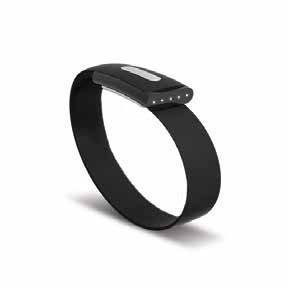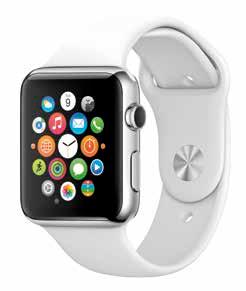
2 minute read
Trends: The Rise in Wearable
WEARABLES
Whether you see advances in wearable technology as a danger to privacy or an easier way to get a technology fix, there’s no denying that the move toward convenient, comfortable and classy gadgets is in full flow. ON looks at how technology has moved from the desktop to the body over the past 50 years.
Advertisement


Apple Watch, 2015 The Apple Watch is a complex sports watch which syncs with your smartphone to display notifications, make calls and send texts easily. Google Glass, 2014 As well as being an even quicker way to communicate and stay up-to-date with current affairs, Google Glass can recognize real-world features, with its military standard head-up display.
Nymi Band, coming soon In a world of heightened security, the Nymi band avoids password problems by using the ECG of your heartbeat as activation. Password personalization just got real.
W200 Computer, 2009 More than just a personal gadget, the W200 brings an entire computer to your arm – handy for emergency services and security work where a hands-free system is essential.
Calculator Wristwatch, 1975 Now quite laughable, the Calculator Wristwatch became a true reflection of the futuristic spirit of the time; released with the hard-hitting slogan “For the man who had everything until just now…”
Fitbit – while far off Garmin’s Forerunner in terms of activity-related information, Fitbit monitors sleep habits and diet as well as fulfilling its primary function as a pedometer. Its unique ‘clip’ shape allows you to attach it to any part of your clothing, such as your belt or pocket. Garmin Forerunner – “If you see me collapse, pause my Garmin”. Wearable fitness technology, while briefly for only elite sportspeople, is now not only widely available and used by the public, but also a practical fashion accessory.
Nike+iPod – one of the most famous business partnerships in wearable technology, the Nike+iPod collaboration provided exactly what users needed after carrying cumbersome gadgets in their pockets.
Aliph Jawbone – the Bluetooth headset uses military-grade noisecanceling technology to make clearer calls in a busy world where you’re always on the move.
WEARABLES IN SPORTS
Looking to the future, it seems that the wearable technology industry has gone far beyond sporting supplements and is now a limitless playground for tech-based imaginations. Forbes has predicted that the wearables industry will triple in the next five years; going from $15 billion in 2015 to $25 billion in 2019. From entertainment and health to the ever-increasing fashion of evaluating our lives in numbers, we are entering an age where most of what can be imagined can be made into wearable technology.
Wearables have taken a more serious turn, with Toyota creating a wearable device for blind people; wearable contactless payment devices; and many variations on wristbands which can monitor basic health issues. The industry is also beginning to become even more connected by moving beyond individual benefits. Life insurance providers are starting to use constantly updated information from wearable devices to get a more accurate view of their customers’ health.
One thing is for sure – wearable smart devices are here and here to stay. As life becomes more and more dependent on gadgets, those who aren’t willing to follow the trend could very possibly find themselves off the network completely. The only thing left to consider now is the endless list of possibilities to come in this booming industry.





